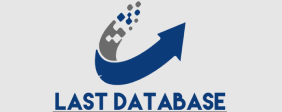Creating a single page within a site is not an easy task.
It takes a lot of human and material resources such as marketers, developers, and web designers.
What if a page created with such hard work by many people does not appear in Google search results?
Saying that there is no exposure is the same as saying that organic traffic does not occur.
If no one can see your page, the purpose of creating the page is of course lost. And the reason for creating the page itself is lost. In order to prevent this situation in advance. It is necessary to check whether pages that do not have natural inflow traffic or cannot be tracked are actually exposed (indexed) in search results, and if they are not indexed, find out the reason and make improvements as soon as possible.
1. Are my pages properly indexed by Google?
(Check Google index status)
After the page is created, here’s how to check if your page Afghanistan Email Lists (or site) is being indexed well by search engines.
Confirm by entering “site: + URL”
The easiest and fastest way is to enter “site:” and your page URL directly into the Google search engine.
For example, “What is search engine marketing?” on the Ascent Korea blog. Here’s how to check if your blog post is being indexed:
A search with “site:” followed by the page URL confirmed that the page was indexed well on the Google search engine. Also, it can be confirmed that there is only one page indexed by Google by the path of the page URL, and it takes 0.27 seconds to load the result.
For pages that are not indexed, when you search with “site:” and the page URL, you will get the same results as above.
If your search returns no matching results as above, it means that it has not been indexed yet.
2. Identify the cause in Google Search Console
If you’re a marketer, developer, or web designer reading this, there are probably a few reasons that come to mind.
One of them might be why my pages aren’t being indexed, but there are ways to find the cause that are more efficient than randomly researching the cause.
The URL Inspection Tool is a tool that provides information about the Google indexed version of a particular page.
Provides information about AMP errors, structured data errors, indexing issues, etc., and is used to test whether a URL can be generated.
In this article, we will look at how to use the URL Inspection tool to check the current indexing issues of a specific page,
i.e. if Google has indexed your specific page or why it is not indexing it.
3. 7 Checklist for Fixing Google Indexing Problems
If your page isn’t being indexed by Google, it’s likely in one of the following cases:
You need to figure out the exact cause in Google EC Lists Search Console and fix the issue accordingly.
1) Check robots.txt
Robots.txt’s role is to control crawler access to specific content, web pages, subfolders, and directories within the website.







